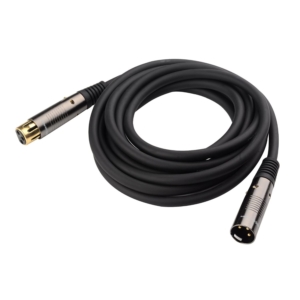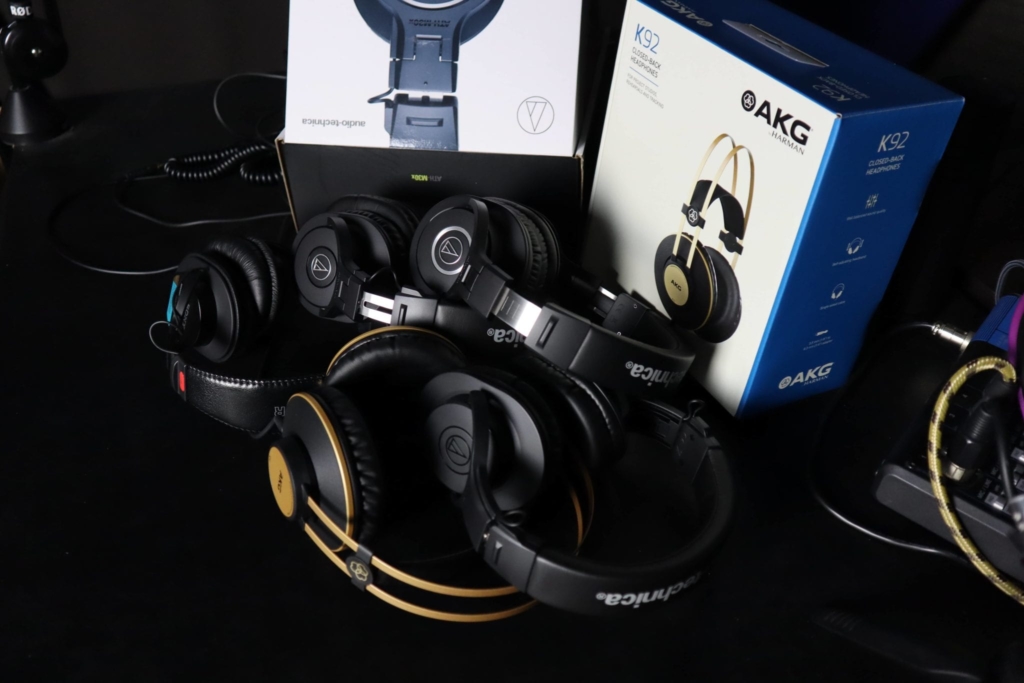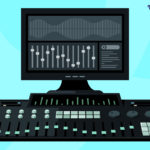The In-Person Podcast Interview Equipment Setup Guide
When we think about in-person podcast interview equipment, the first things that spring to mind are the mics and the recorders. In this series so far, we’ve covered both. We talked about the Zoom H5 Vs the Zoom H6 as your recorder options, whilst the Shure SM58 or Samson Q2U mics make for great on-the-go options.
If you’ve got yourself a good digital recorder, as well as a couple of mics to plug into it, then you’re well on the way to recording high-quality in-person conversations with interview guests or co-hosts.
Now, we just need the parts to connect it together, and the components that let us set them up. Let’s have a look.
Cables
First off, we need good quality cabling to connect your mics to the recorder. This is important: it’s worth spending money on cabling.

Think of it this way, you’ve just spent $600 on top quality components – what do you think happens if you then send that crisp, pristine audio signal down a cheap, trashy cable? Crappy sound from your quality components, I’m afraid. So, stump up 20+ quid for a good cable. It’s worth it.
What we need to be able to connect the microphone to the digital recorder is a XLR Male to Female cable. This is the 3-pin style of cable that you might have seen connected up to a mixer, or in a pro audio set-up at a music venue.
Some XLR cable recs, then. These are affiliate links (as are some of the others in this post) so we’d earn a small commission if you were to buy through them – at no extra cost to yourself. Cable Matters cables are decent for those in the US, and I like Planet Waves cables in the UK.
You’ll need two cables in total, one for each microphone. And as an aside, you’ll usually get an XLR cable in the package along with the Samson Q2U. If that’s your preferred mic, you can try that before investing in better cables later.
If you want to take a deep dive into the world of audio cables, then check out our guide I’ve linked to here.

Monitor Headphones
While you could live without decent headphones, I wouldn’t recommend it. To create great quality audio, you need to hear what you’re recording. To do that, you need accurate monitors. In this case, monitors mean headphones that are designed to give you a faithful reproduction of the sound coming into your recorder.
This might sound a little weird, until you realise that normal headphones do all sorts of things to your audio in order to make it sound better. The most common is a small amount of bass boost – everyone needs more bass after all, huh? Listening to your voice through standard music headphones will often give you a false image of how bassy your recording is. That might encourage you to step back from the mic a little, or speak a little differently.
Monitor headphones aren’t very expensive so it’s well worth the investment. Here’s our full guide to choosing the best podcast headphones. For 95% of podcasters out there, the Audio Technica ATH-M20Xs will be absolutely ideal, in both price and quality.
Headphone Splitter
If you want to provide monitoring to both people in the conversation, then you’ll need a headphone splitter.
If you’re co-hosting regularly, then this is a good idea. It allows both hosts to hear the conversation, via the recorder, and check that their mic technique is good. With interviews this is less important. An interviewee generally wont be experienced enough to monitor their technique in any case. Saying that, it’s not a hard thing to teach, so if your budget allows, it can be worth the investment.
To stay mobile, get a basic splitter. Alternatively, for more control (eg. separate volume control for each person), get one like the Behringer HA400.
Microphone Stand
You can quite easily record an interview without microphone stands. The SM58s are pretty much designed to be handheld. As we mentioned in our review, they are exceptional at dealing with handling noise. The Samson Q2U performs well on this front, too. You hold one mic in your right hand, the recorder in the left, and your interviewee holds the other mic. That makes for perfectly good interview. It also makes for a really mobile set-up with minimal components. You can take this anywhere, ready for recording at any time.
Microphone stands improve things for a couple of reasons, however. First, they improve sound quality a little through the lack of hand-holding. As good as the SM58s are, they’ll still pick up a little bit of vibration, rubbing and other handling noises.
Secondly, they allow you to keep your mic technique really consistent. When the microphone is held always in the same place, you can make sure you’re equally in the same position relative to it. While this is possible, to a degree, when holding the mic, a little movement is very common.
The choice here, then, is mobility. If you’ll be recording in the same place each week, then get microphone stands. If you’ll be recording out-and-about, a different place each time, then don’t.
If you go for it, there’s not too between the basic floor-stands. Something like the Samson MK10 will do perfectly.
Remember, if you don’t get one with your stand or mic, you’ll need a microphone clip to attach it to the stand, too!
Conclusion: In-Person Podcast Interview Equipment
We could add a few more things to the set-up, like pop filters or windscreens, but that’s just starting to complicate things. A windscreen could be a good idea if you’re going mobile to reduce wind noise or big pops, but you can do perfectly well without it. So, really, that’s everything you need!
This minimal set-up – the SM58, the Zoom H5, a pair of XLR cables and a set of Audio Technica ATH-M20X headphones – is as good a set-up as anything the BBC will use out on location. If you have the budget, you wont regret it!
Need More Help?
This was part 4 in the series – Recording Professional Face to Face Podcast Interviews:
- How to Record Face-to-Face Podcast Interviews: The Full Guide
- Zoom H5 Vs Zoom H6 as a Digital Recorder: Which to Choose?
- Shure SM58 Review | The Apocalypse Survival Mic
- The In-Person Podcast Interview Equipment Setup Guide
- Full Audio or Podcast Interview Equipment Shopping List
And, if you’d like more help on anything from choosing equipment, to editing, to promotion and monetisation, then check out Podcraft Academy. There, you’ll find all of our courses, downloadable resources, and get access to our weekly live Q&A sessions.

